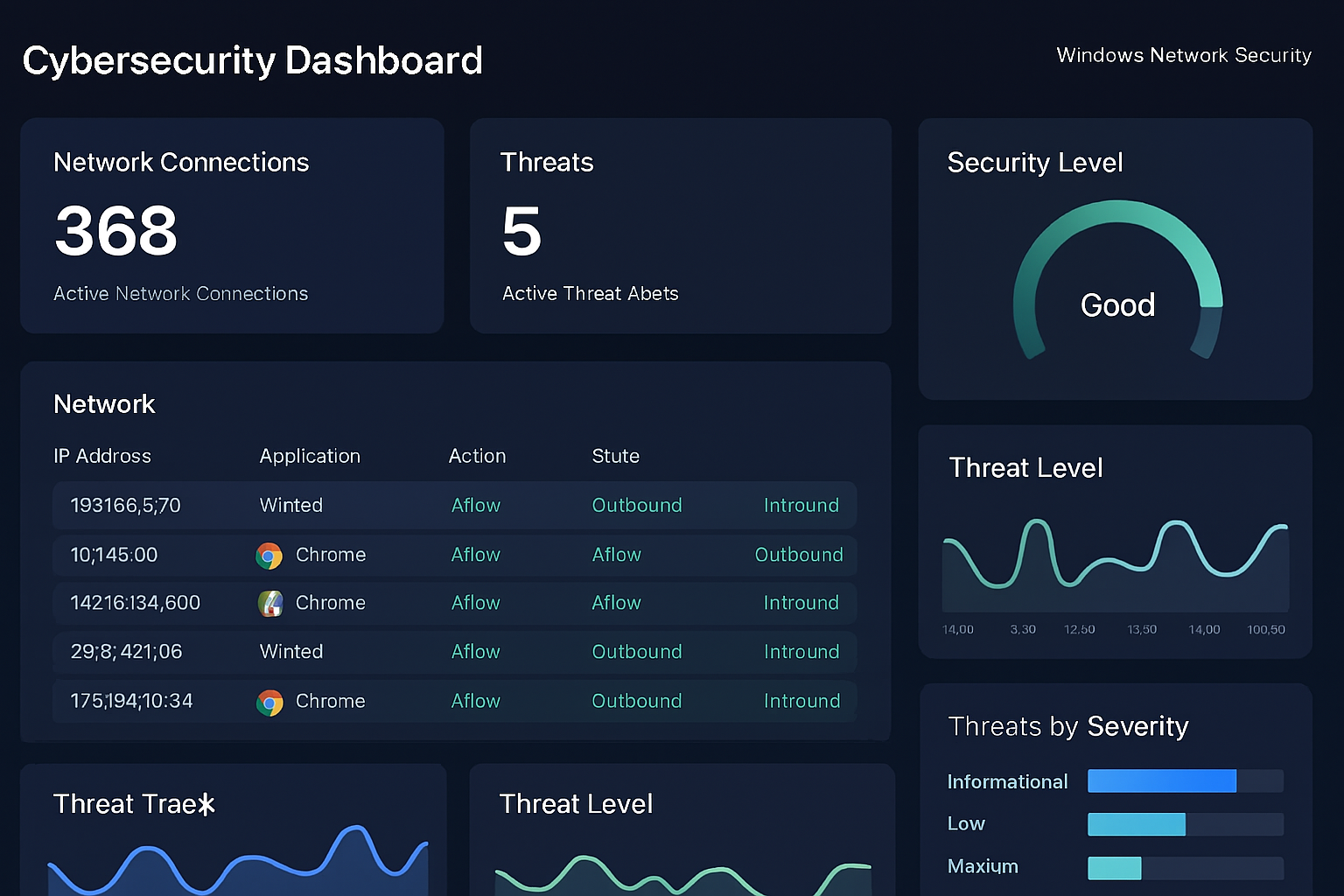Endpoint Detection and Response for Windows Systems: Your Complete Security Guide
In today’s rapidly evolving cybersecurity landscape, organizations face increasingly sophisticated threats targeting their Windows infrastructure. Endpoint Detection and Response for Windows Systems has emerged as a critical security solution, providing advanced threat detection capabilities that go far beyond traditional antivirus software. This comprehensive approach to endpoint security offers real-time monitoring, intelligent threat analysis, and automated response mechanisms specifically designed to protect Windows environments from modern cyberattacks.
As cybercriminals continue to develop more complex attack vectors, businesses need robust cybersecurity solutions that can adapt and respond to emerging threats. Windows systems, being the most widely used operating systems in enterprise environments, require specialized protection that understands their unique architecture, vulnerabilities, and operational characteristics.
Understanding Endpoint Detection and Response Technology
Endpoint Detection and Response represents a paradigm shift from reactive to proactive cybersecurity. Unlike traditional security solutions that focus primarily on prevention, EDR systems continuously monitor endpoint activities, collect behavioral data, and analyze patterns to identify potential threats in real-time.
For Windows environments, EDR solutions integrate deeply with the operating system’s native security features, leveraging Windows Event Tracing, PowerShell logging, and registry monitoring to gain comprehensive visibility into system activities. This deep integration allows security teams to detect subtle indicators of compromise that might otherwise go unnoticed.
The technology employs machine learning algorithms and behavioral analysis to establish baselines of normal system behavior. When activities deviate from these established patterns, the EDR system flags them for investigation, enabling security teams to respond quickly to potential threats before they can cause significant damage. This proactive approach is essential for organizations looking to implement comprehensive managed IT services that include advanced security monitoring.
Key Benefits of EDR for Windows Environments
Implementing Endpoint Detection and Response for Windows Systems provides organizations with numerous advantages that significantly enhance their security posture. The primary benefit lies in the solution’s ability to provide comprehensive visibility across all Windows endpoints, creating a unified security monitoring platform that covers desktops, laptops, and servers.
Real-time threat detection capabilities allow security teams to identify and respond to threats as they emerge, rather than discovering them weeks or months after initial compromise. This rapid detection significantly reduces the potential impact of security incidents and helps organizations maintain business continuity.
Advanced forensic capabilities enable detailed investigation of security incidents, providing security analysts with the information needed to understand attack vectors, assess damage, and implement appropriate remediation measures. This forensic data also proves invaluable for compliance reporting and improving future security strategies.
The automated response features of modern EDR solutions can immediately contain threats by isolating compromised endpoints, terminating malicious processes, or blocking suspicious network communications. This automation ensures that threats are addressed even when security teams are not immediately available to respond manually. For businesses requiring comprehensive protection, EDR works seamlessly alongside server workstation monitoring services to provide complete infrastructure visibility.
Essential Features to Look For
When evaluating Endpoint Detection and Response for Windows Systems, organizations should prioritize solutions that offer comprehensive behavioral monitoring capabilities. The ideal EDR solution should monitor file system changes, network communications, process execution, and user activities across all Windows endpoints.
Threat intelligence integration is another crucial feature that enhances the solution’s detection capabilities. By incorporating up-to-date threat intelligence feeds, EDR systems can identify known malicious indicators and attack patterns, improving their ability to detect sophisticated threats.
Incident response automation features should include the ability to automatically isolate infected endpoints, collect forensic evidence, and execute predefined response playbooks. These automated capabilities ensure consistent and rapid response to security incidents, regardless of the time of day or availability of security personnel.
Cloud-based management consoles provide centralized visibility and control over distributed Windows environments, enabling security teams to monitor and manage endpoints across multiple locations from a single interface. This centralization improves operational efficiency and ensures consistent security policy enforcement.
Integration with existing security tools and processes ensures that EDR data contributes to a comprehensive security strategy. Organizations should also consider how EDR complements their backup and disaster recovery plans, as endpoint security incidents can significantly impact business continuity if not properly addressed.
Implementation Best Practices
Successful deployment of Endpoint Detection and Response for Windows Systems requires careful planning and adherence to proven best practices. Organizations should begin with a comprehensive assessment of their existing Windows infrastructure to understand endpoint diversity, network architecture, and current security controls. Many businesses benefit from conducting a thorough cybersecurity assessment before implementing EDR solutions to identify potential gaps and vulnerabilities.
Phased deployment approaches work best for large environments, allowing organizations to test and refine their EDR configuration before rolling out to all endpoints. Starting with critical systems and gradually expanding coverage ensures minimal disruption to business operations while providing immediate protection for the most valuable assets.
Proper tuning and customization of EDR rules and policies is essential for optimal performance. Generic configurations often generate excessive false positives or miss environment-specific threats. Organizations should work closely with their EDR vendor to customize detection rules based on their specific Windows environment and threat landscape.
Integration with existing security tools and processes ensures that EDR data contributes to a comprehensive security strategy. This integration should include SIEM systems, incident response platforms, and threat intelligence tools to create a cohesive security ecosystem. Organizations should also evaluate how EDR fits within their overall network design and security architecture to maximize effectiveness.
Addressing Common Implementation Challenges
Organizations often encounter performance concerns when deploying Endpoint Detection and Response for Windows Systems. Modern EDR solutions are designed to minimize system impact through efficient data collection and processing techniques. However, proper sizing and configuration are essential to ensure optimal performance on Windows endpoints. Businesses may also want to consider conducting a ransomware assessment to understand their specific risk profile and tailor EDR configurations accordingly.
Alert fatigue represents another significant challenge that can undermine EDR effectiveness. Organizations should invest time in proper tuning and analyst training to ensure that security teams can effectively prioritize and respond to EDR alerts. Implementing automated triage and response capabilities can also help manage alert volumes.
Skills gaps in security teams can limit the effectiveness of EDR implementations. Organizations should provide comprehensive training on the chosen EDR solution and consider managed security services to supplement internal capabilities during the initial deployment phase. For businesses in the Sacramento area and surrounding regions, partnering with experienced IT support providers can help bridge these skills gaps and ensure successful EDR implementation.
The Future of Windows Endpoint Security
The landscape of Endpoint Detection and Response for Windows Systems continues to evolve rapidly, with artificial intelligence and machine learning playing increasingly important roles in threat detection and response. Future EDR solutions will likely incorporate more sophisticated AI capabilities, enabling even more accurate threat detection and automated response.
Integration with cloud security platforms and zero-trust architectures will become increasingly important as organizations continue their digital transformation journeys. EDR solutions must adapt to support hybrid and cloud-first Windows environments while maintaining the same level of visibility and control.
Conclusion
Endpoint Detection and Response for Windows Systems represents an essential component of modern cybersecurity strategies. As cyber threats continue to evolve and target Windows environments, organizations must invest in advanced security solutions that provide comprehensive visibility, intelligent threat detection, and automated response capabilities.
The implementation of EDR technology significantly enhances an organization’s ability to detect, investigate, and respond to security threats targeting Windows systems. By choosing the right solution and following proven implementation practices, businesses can substantially improve their security posture and protect their valuable digital assets from increasingly sophisticated cyber threats.
Success with Endpoint Detection and Response for Windows Systems requires ongoing commitment to proper configuration, regular tuning, and continuous improvement of security processes. Organizations that embrace this comprehensive approach to endpoint security will be better positioned to defend against current and future cyber threats. For businesses seeking professional guidance, contacting experienced IT security professionals can provide the expertise needed to implement and maintain effective EDR solutions that protect critical Windows infrastructure.




Comments are closed